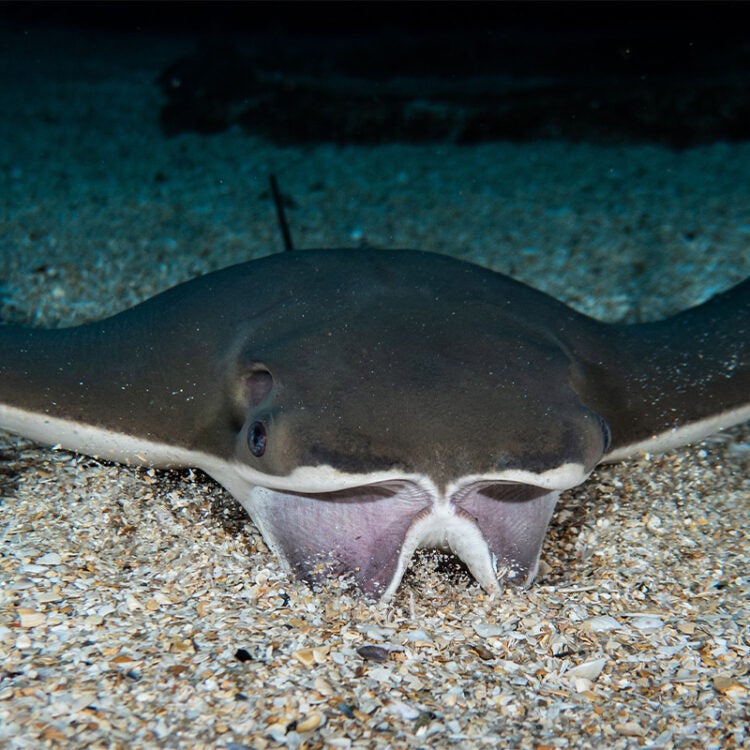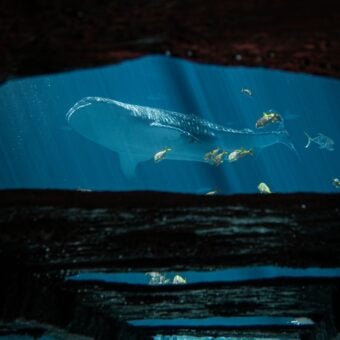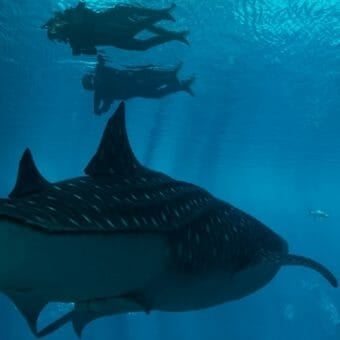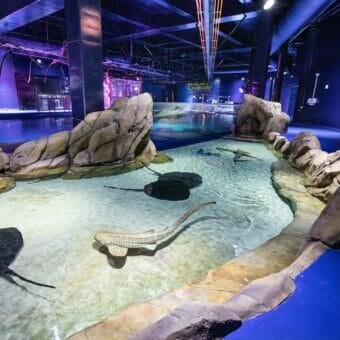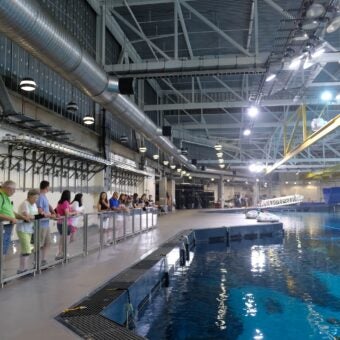-
Size
3-4 feet (1-1.2 m) -
Diet
Crabs, bivalves, lobsters and bony fishes -
Range
Atlantic Ocean and Gulf of Mexico -
Habitat
Tropical climates in open water and near the coast
Physical Characteristics
- Common length of 3.8 feet (1.2 m) but rays as large as 7 feet (2.1 m) wide have been recorded.
- The forehead resembles a cow’s nose; with an indented groove around the front of its head and a distinctly bi-lobed snout.
- The wings (pectoral fins) are long and pointed.
- It has a long whip-like tail with one or two barbs at the base.
- Coloration is usually brown to olive on the back (dorsal surface), with no spots or marks. The lower body (ventral surface) is white or yellowish-white.
Animal Fact
The cownose ray has been known to feed by using its snout to forage in the sand along the ocean bottom, much like a pig would do on land.
Diet / Feeding
- Feeds on crabs, bivalves, lobsters and bony fish.
- The mouth is located on the underside of the body and has strong plate-like teeth for crushing mollusk shells.
- One way the cownose ray will feed is by using its pectoral fins to stir up the bottom sediments to reveal its prey. It may also use its snout to forage and root on shallow saltwater flats in much the same way in a wild pig would on land.
Range / Habitat
- Occurs in the Atlantic Ocean and throughout the Gulf of Mexico, migrating to Trinidad, Venezuela and Brazil.
- Found in tropical climates to depths of 72 feet (22 m).
Reproduction & Growth
- Ovoviviparous; young hatch from eggs inside the female and are released from her body alive. Their reproduction period is June through October.
- Cownose rays typically produce one pup per pregnancy, though there have been reports of six concurrent embryos in a female.
- Interestingly, gestation for cownose rays is variable. Eleven to twelve months if there is to be one reproductive event per year, five to six months if there are two.
- This seems to be a geographic variation. Cownose rays found in the Chesapeake Bay tend to have two reproductive events per year while cownose rays in the Gulf of Mexico tend to have one reproductive event per year.
Conservation Status
- “Vulnerable” on the IUCN Red List.
Additional Information
- Cownose rays are a pelagic, or open ocean, species also found near the coast.
- Form segregated schools and are often seen in aggregations numbering in the thousands.
- Preyed upon by many sharks, especially hammerheads. Barbs from the species have been found embedded in the heads, jaws and mouths of various shark species.
- Cownose rays may live 15-20 years.
- Often mistaken for a shark by swimmers because when it ‘flies’ near the surface its wingtips frequently break the surface and resemble a shark’s dorsal fin.
- Occasionally seen jumping and landing with a loud smack – probably as a territorial display.
- The cownose ray is considered oceanodromous, meaning it undertakes long migrations to different parts of the ocean. It moves in large groups, usually in a seasonal pattern. In the Atlantic, the species moves northward in the late spring and southward in the late fall. In the Gulf of Mexico, it migrates in a clockwise manner according to season.
- The population is believed to be increasing in numbers. Schools of up to 10,000 rays have been observed leaving the west coast of Florida for Yucatan, Mexico in the fall.
- High predation of oyster beds could further complicate the problem of declining oyster populations. As a solution they were considered for commercial fisheries but, after cost analysis studies, it was decided not to pursue this option due to the high expense of harvesting the rays.
- Vision research in rays is ongoing, including investigating their possible ability to see in color. So far, a conclusion has not been reached.
Sources
- www.fishbase.org
- The Shark Almanac. Allen, T. B., pg. 144
- www.flmnh.ufl.edu/fish/Gallery/Descript/CownoseRay/CownoseRay.html

